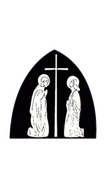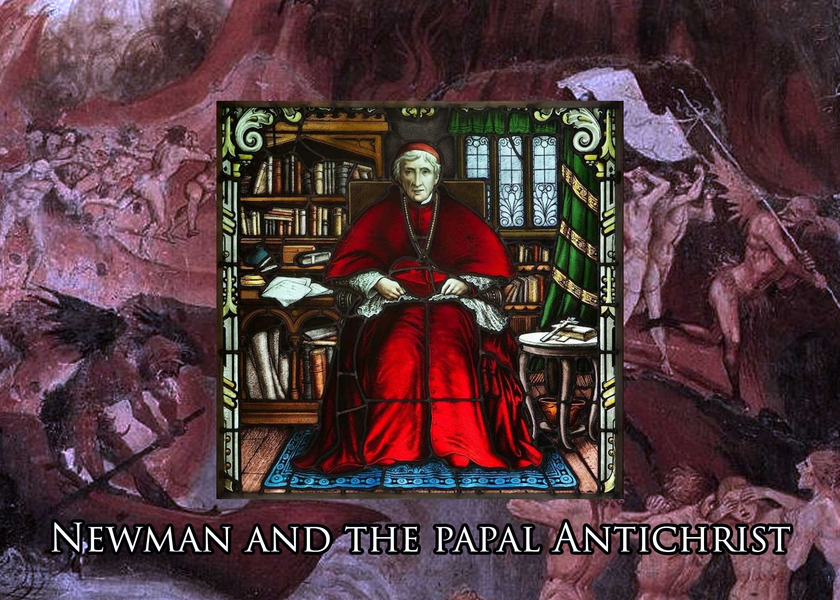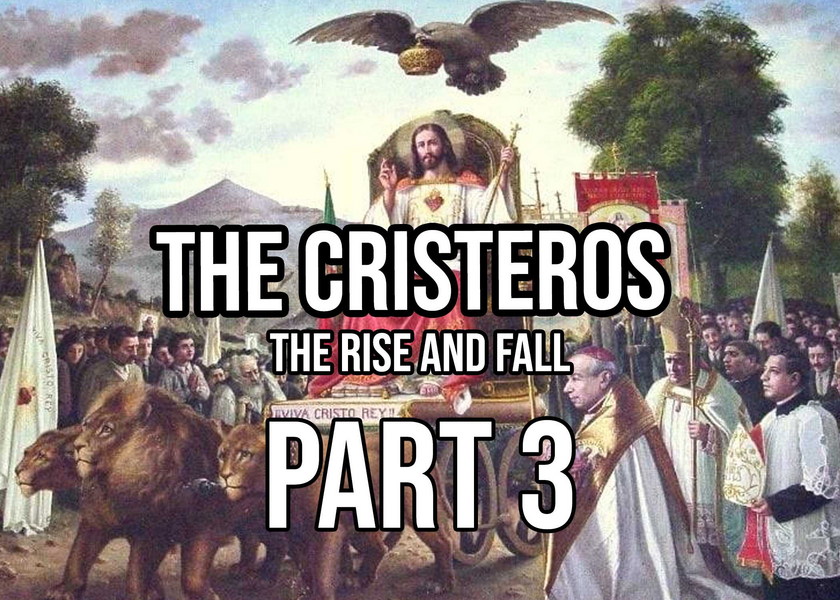Echoes of Prophecy: Newman’s View of the Antichrist
By Murray Rundus
In these times of darkness, when clouds of contradiction and evil overshadow the Eternal City, many of our traditionalist fold have found themselves looking for answers in the ancient prophecy of the Apocalypse. Across the world, seats of power as high as the American Empire and the Holy See itself are held by men who, claiming to be members and even representatives of God’s fold, are found to be men of scandal and even men of sin. This has naturally led a few of us to wonder if any one of the men of sin might be the man of sin from 2 Thessalonians.
“Let no man seduce you by any means: for unless there come a revolt [Greek, apostasia] first, and the man of sin be revealed, the son of perdition, who opposeth and is lifted up above all that is called God or that is worshipped, so that he sitteth in the temple of God, shewing himself as if he were God” (2 Thess. 2:3-4).
But let us not think that such fervor is exclusive to our age. Throughout the chronicles of history, we find that whenever the winds of chaos howl, many men flee to the prophecy of Scripture and conclude that the time foretold really is now at hand. At the forefront of the issue is the identification of the Antichrist. Such turmoil seems to present a number of temptations that, if fallen into, have historically led to heresy, schism, and mass hysteria. A guiding light on this issue of the Antichrist shone forth within the past two centuries as a man who stood by reason and tradition rather than rashness and temerity. The great Cardinal John Henry Newman, a man so often misunderstood, abused, and underappreciated in our times, speaks with remarkable clarity on the subject of the Antichrist, and in his writings on the subject, we can find the roots for his conversion to the Catholic Church.
The Pre-Catholic Newman
Cardinal Newman is often known for two main works: his autobiography Apologia pro vita sua, and his essay concerning the development of Christian Doctrine. Other works such as The Grammar of Assent, The Idea of a University, and The Arians of the Fourth Century, too, come up in niche discussions. However, the vast extent and body of his works are often unknown to modern Catholics. Many of his early essays, tracts, and miscellaneous writings are packed full of so much information and rhetorical beauty that any one of them would blow away any modern article or thought piece. One of these early writings is his October 1840 issue The Protestant Idea of Antichrist. This is a work from before Newman’s conversion to Roman Catholicism, but it very much so reflects the so-called Anglo-Catholicism of his day and oftentimes reads as a desperate attempt to distance the English church from anything Protestant. Indeed, we can imagine that one would have had to be fairly diluted to not foresee a potential embrace of the Catholic Faith on the part of these Tractarians, these “Anglo-Catholics,” even by looking merely at the precarious nature of their position itself.
The Nature and Origin of the Question
“If dreadful scenes still await the Church, if they have been foretold, and foretold that Christians may be prepared for them, no calamity can be greater than a belief that they have already been fulfilled.”[1]
As Catholics, we should notice the great cunning and extensive deceit that the Prince of Darkness uses to deceive those plagued by scandal. What better way to subvert the warnings to the Church of God of the Times of Tribulation than to convince the masses that they have already occurred, and even weaponize such a prophecy against the very Church herself? Such is the falsehood that needs reckoning with: “[Whether] its fulfilment is yet to come, or whether it has taken place in the person of the Bishop of Rome, as Protestants have very commonly supposed.”[2]
And so it is still commonly supposed by many Protestants to this day. Many people, particularly those living within more Protestant-dominated regions of America, will not be taken aback to hear of the claim that the Pope is the Antichrist. Newman would not have been shocked that this view survived. As we will see, the claim flows from the very nature of Protestantism. What would have been shocking to Newman, however, would have been to hear that today, many Catholics claim that the Pope is the man of perdition. To understand why such a claim might be disturbing for a Catholic, particularly traditional Catholics who vehemently cling to the history, tradition, and practices of our fathers in the Faith, we should look at Newman’s overview of how the claim has presented itself throughout history.
The Heretical History of the Claim
There is an ancient tradition within the Western Church going back nearly a millennia of identifying the Pope with the Antichrist after identifying Rome with the city of Babylon. The problematic part of this claim, however, is that this was originated “by three heretical bodies, between the eleventh and sixteenth centuries, in consequence of their being submitted to persecution for their opinions.”[3] These were not minor heresies either, but ones that shook the world before the Protestant revolt. The first was the Albigensian heresy with their Manichean hatred of marriage and the material world, a heresy which would be annihilated by St. Dominic and Our Lady’s Rosary. The second would be the Waldensians who, failing to obtain sanction for their novelties, “seceded, and proceeded to denounce the Church of Rome, not on the Manichaean principle, nor exactly on the Protestant, though on one which Protestants have often taken, that the Church or its clergy lost their spiritual powers from the period of their consenting to receive temporal endowments.”[4] The final was the so-called Fratricelli, a group of Franciscans who held St. Francis to be an Angel of heaven rather than the humble friar that he was. These men would deny the Pope any right over their rule, and so claimed that they were the true church and that the Church of Rome was the synagogue of Satan, the beast of the Apocalypse.[5]
Such examples are not stellar references for the legitimacy of the Papal Antichrist theory. But why, then, would the Protestants take up such a claim? Newman gives us some keen insight that the Protestant position is not strong on tradition, nor in doctrinal mastery, but finds its strength in simple, fiery propaganda.
“Thus surely it was that Luther made progress, not by appeals to the Fathers, not by reasonings on the nature of the case, not by elaborate deductions from Scripture, but by positions venturous, striking, stamped with originality, and suited even to the ignorant, that we are justified by the sole instrumentality of faith, that our best works are sins, that assurance is possession, and, among these, that the Pope is Antichrist.”[6]
What simple logic! Why come up with an elaborate system of claims when you could appeal to the emotions and ignorance of others? To their credit, the later Protestants such as Calvin and Chemnitz would create elaborate attempts to fight our Roman claim, as Newman himself admits, but not without serious difficulty and massive errors that would go on to be exposed by St. Robert Bellarmine. But the reasoning behind making such simple appeals to emotion and sentiment is clear, as it is easy to demolish the Catholic claim if you can prove that the Church is not the Church but Babylon herself. Indeed, “A Church can have no rights which has ceased to be a Church.”[7] The same reasoning that the Albigensians, Waldensians and Fratricelli used to justify their novelties we see also in the Protestant revolt. Prophecy is notoriously subject to interpretation, and if one can capitalize on present scandals, good rhetoric, and various logical fallacies, we can find that it can be the perfect vehicle to promote heresy.
















